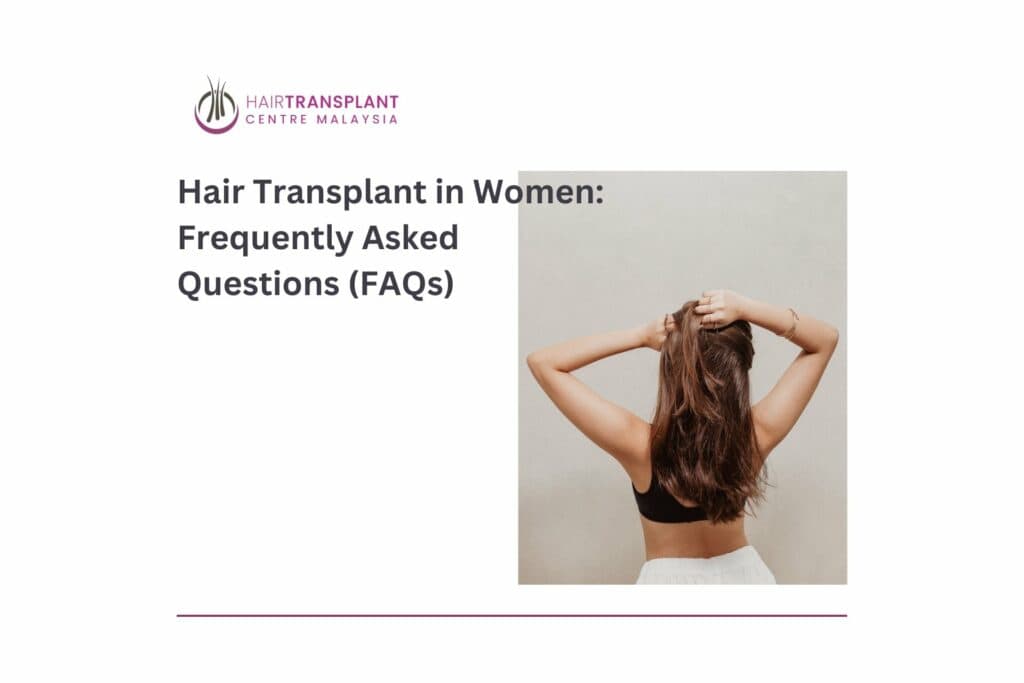Hair Transplant in Women: Frequently Asked Questions (FAQs)
Many people in today’s world value good health. This is a positive shift in the culture. Healthy hair development is one of the many variables that contribute to a healthy physique. Unfortunately, many people are losing their natural capacity to keep thick locks of hair as a result of contemporary life. For both men and women, hair transplantation is the good news. When performed by a skilled surgeon, hair transplantation results in natural hair growth over time. Hair loss affects both men and women equally, however it presents in women as bald patches or hair thinning when combed.
If you’re dealing with these issues and considering a hair transplant, you’re likely to have a lot of questions. This article will assist you in addressing the most often asked issues concerning hair transplantation in women.
Let us call you

How much hair loss is considered normal?
Individual preferences are taken into account. Hair loss of 50-100 strands each day is considered typical by doctors. As a result, new hair follicles appear on a daily basis. The natural hair renewal process is slowed or stopped owing to a variety of circumstances such as pollution, stress, hormonal changes, and so on. A hair restoration centre should be consulted in such circumstances.
How can I tell whether I’m a good candidate for hair transplant surgery?
That’s not difficult to figure out. Because the donor locations for the grafts are the sides and back of the head, healthy hair on those areas is one of the most important factors. Women are suitable candidates for hair transplantation if they meet the following criteria:-
- bald areas that are very distinct and apparent
- Hair loss that is more than average
- Hair loss can occur as a result of scalp trauma, scarring, or cosmetic surgery.
- Eyebrow thickening
- Previous hair restoration treatments have been modified
What is the technique for Hair Transplant in Women?
UT and FUE hair restoration techniques are available. All of them are based on the same basic premise. On the back or sides of the head, where the hair is thicker, a strip of hair is removed. Grafts are created from this hair. The recipient location is where these grafts are placed. Hair will regrow in the donor areas over time. The donor site incision is properly closed, with only a small line visible through the hair.
Is the entire therapy done in how many sessions?
Multiple sessions may be necessary depending on the extent of the bald spot. Even before the surgery begins, everything is well-planned. There will be a delay between subsequent sessions. Hair Sure surgeons strike the ideal balance between the number of sessions required and the amount of grafts planted during each session. Each session might run anywhere between 3 and 4 hours. During this time, the patient is allowed to rest.
What was the patient’s postoperative experience like?
Following their operation, patients can return to work in a few days. For a week, refrain from engaging in strenuous physical activity, such as going to the gym or lifting heavy weights. To minimize swelling and discomfort, your surgeon will prescribe medicine. At the operation site, patients notice crusts or tiny scabs, as well as irritation. In seven to 10 days, all of these symptoms will be gone. Follow-ups must be done on a regular basis. They’ll happen every four to six months. The surgeon will monitor the freshly implanted grafts’ growth rate as well as the donor site’s recuperation throughout these follow-ups.
When will the hair transplantation findings be available?
The level of your hair loss, the density of your donor’s hair, and the number of sessions you have are all factors that influence the final outcome. In a month, the hair transplanted will fall out. You will notice fresh hair growth within 90 days, and it will continue to grow at a regular rate after that. The new hair takes on a natural appearance after six months and will grow for the rest of your life. Meanwhile, the donor region will gradually return to its pre-transplant state, with a minor incision buried in the hair.
Are there any risks associated with hair transplant?
A hair transplant is still a surgery, even if it is less invasive, although the risks are rare and in most cases minor. Occasionally, bleeding and infection may occur, which your surgeon can immediately address. Discuss your current medications with your surgeon so that they may advise you on what to avoid so that your operation goes smoothly.
Is it painful to get your hair transplanted?
Local anesthesia and intravenous sedation are given to the patient. As a result, the operation is completely painless. Patients do, however, endure discomfort after surgery. As a result, to alleviate post-operative discomfort, your surgeon will prescribe NSAIDs (nonsteroidal anti-inflammatory medicines).
With my new hair, when will I be able to resume my favorite pastimes, such as swimming or other strenuous activities?
Simply wait seven to ten days following the treatment to resume your normal activities, such as swimming and sports. Because the transplanted hair is permanent, you may wash, trim, and dry it as you normally would.
Will hair transplant in women fall out over time?
The transplanted hair goes off, but the new hair will grow normally for the rest of your life. Make sure to keep your follow-up appointments, and if you have any concerns about new hair growth, talk to your surgeon about it.


